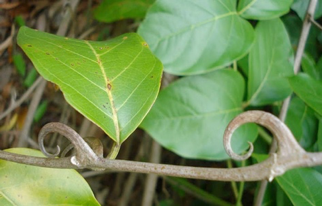Module 12: Treatments to Increase Growth, Yields, and Forest Product Quality
Topic 12.5: Environmental Impacts of Stand Improvement Treatments
Liberation thinning, vine cutting, and other stand “improvement” treatments are not improvements at all from the perspective of the vines that are cut, the trees that are girdled, or all the various animal species that depend on the plants selected against. Stands that are intensively managed for timber can be essentially converted into plantations, with all the attendant negative impacts on biodiversity. Presently the problem in most of the tropics is too little, not too much management, but silviculturalists nevertheless should be aware of this potential problem.
Impatience is a common threat to environmentally, silviculturally, and fiscally sound forest management. Sometimes the best decision is to let a stand recover slowly on its own, without silvicultural intervention. In some cases, silvicultural treatments are misapplied: for example, an overstory of fast-growing, short-lived, light-demanding trees may serve as a nurse crop for the slower growing commercial species that grow up in their sparse shade–removing the cover crop would be wasteful and ineffective. Also, dense stands can be left to self-thin, at no direct cost to the forest manager. Furthermore, heavily thinned stands may suffer excessive wind-throw and other damages.
The best overall advice when prescribing and applying timber stand improvement treatments is to be gentle. A non-commercial species today may fetch a high price tomorrow. Today’s weeds may provide tomorrow’s wonder crop (Figure 12.5.1). Remember that forests are more than trees and should be managed accordingly.


Figure 12.5.1 Uncaria spp. (Rubiaceae), known in Latin America as “uña de gato” (claw of the cat) is commercially marketed as a medicinal tea whereas in Southeast Asia, members of the same species are now considered silvicultural weeds but were formally cultivated as “gambier” for their bark, which is high in tannins.
